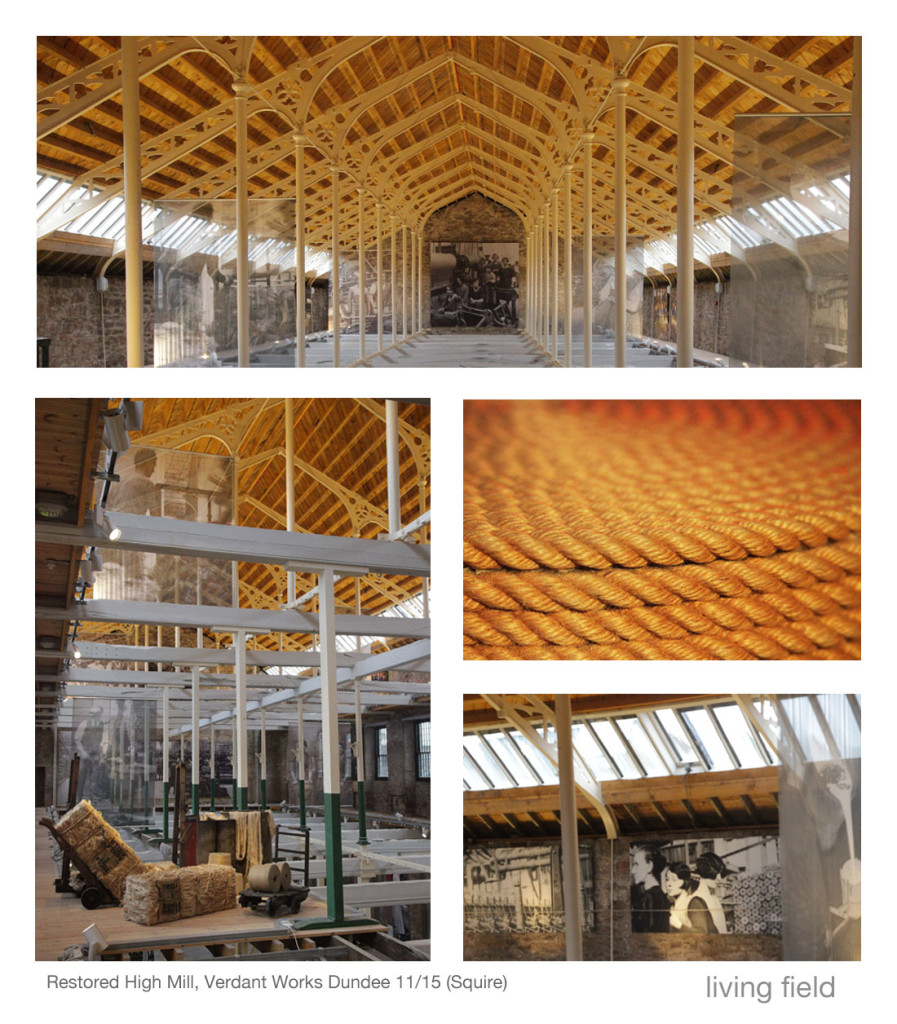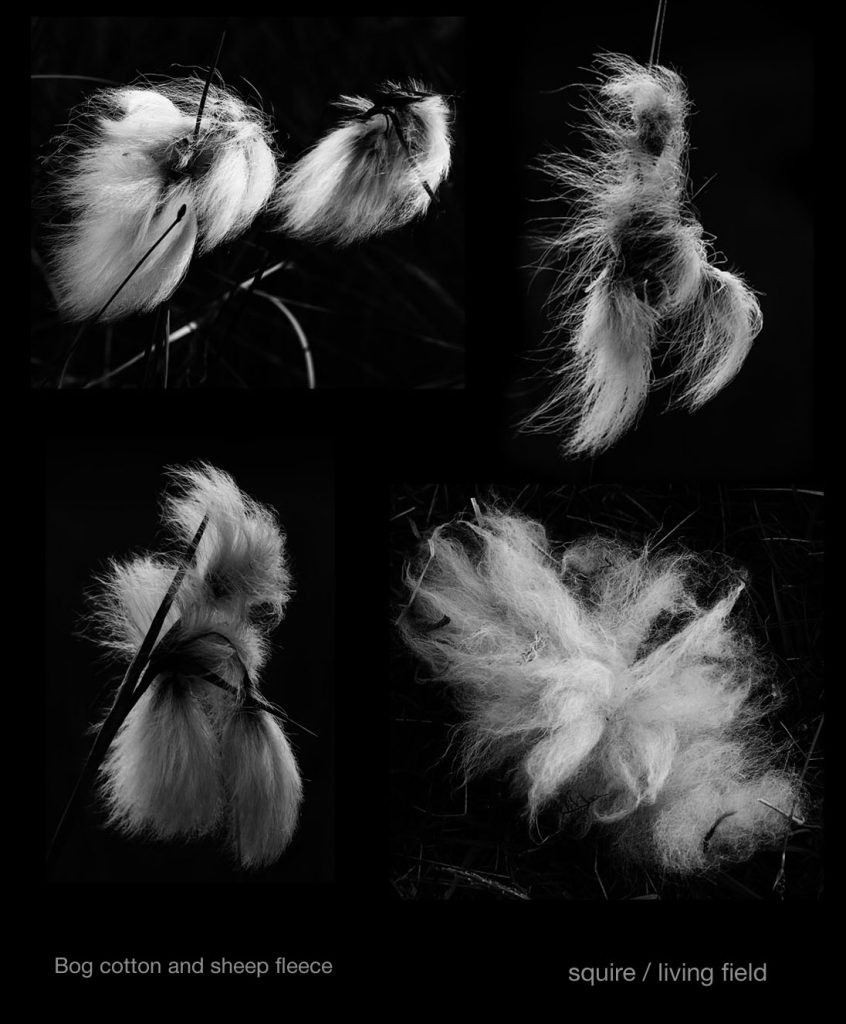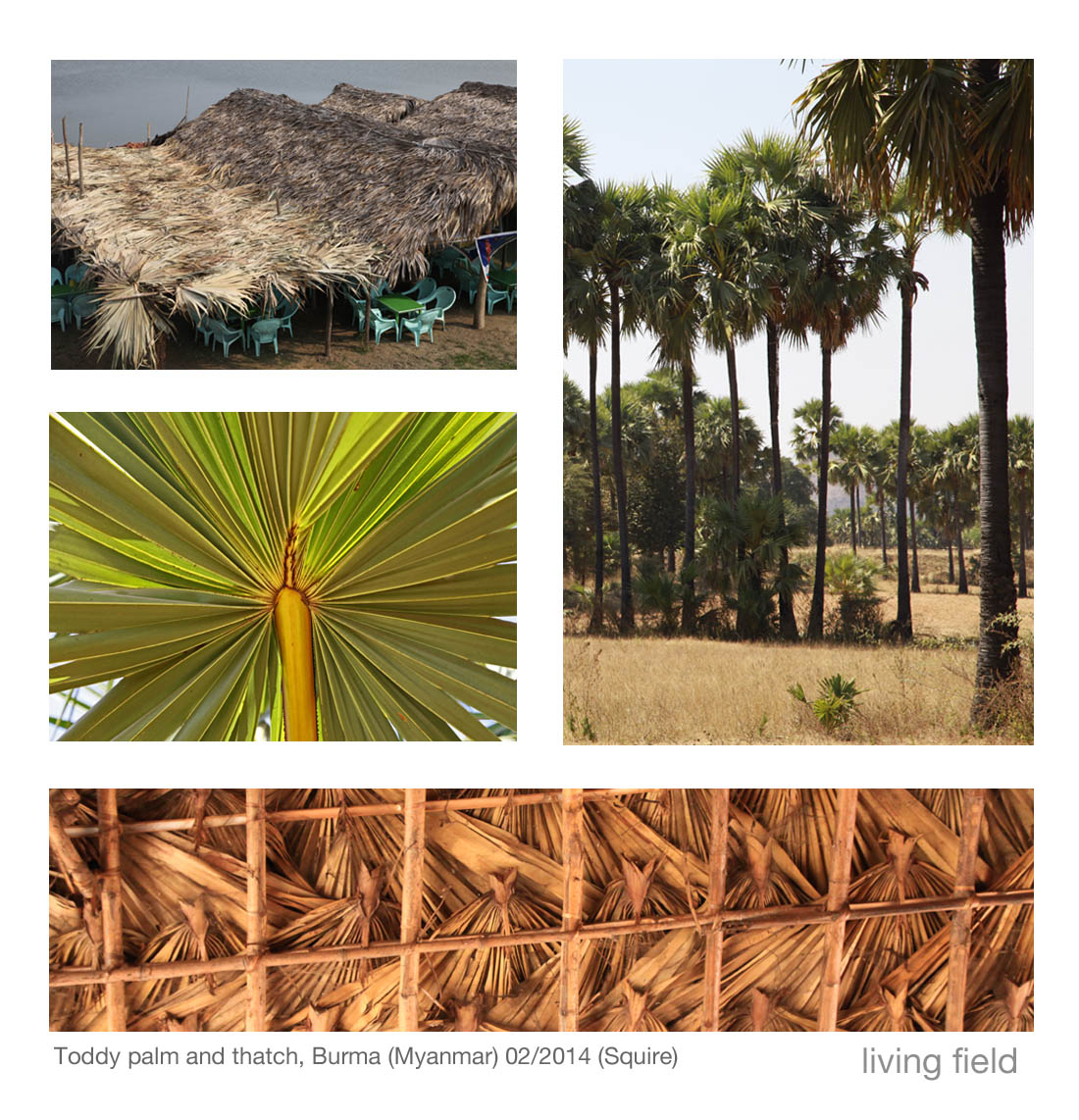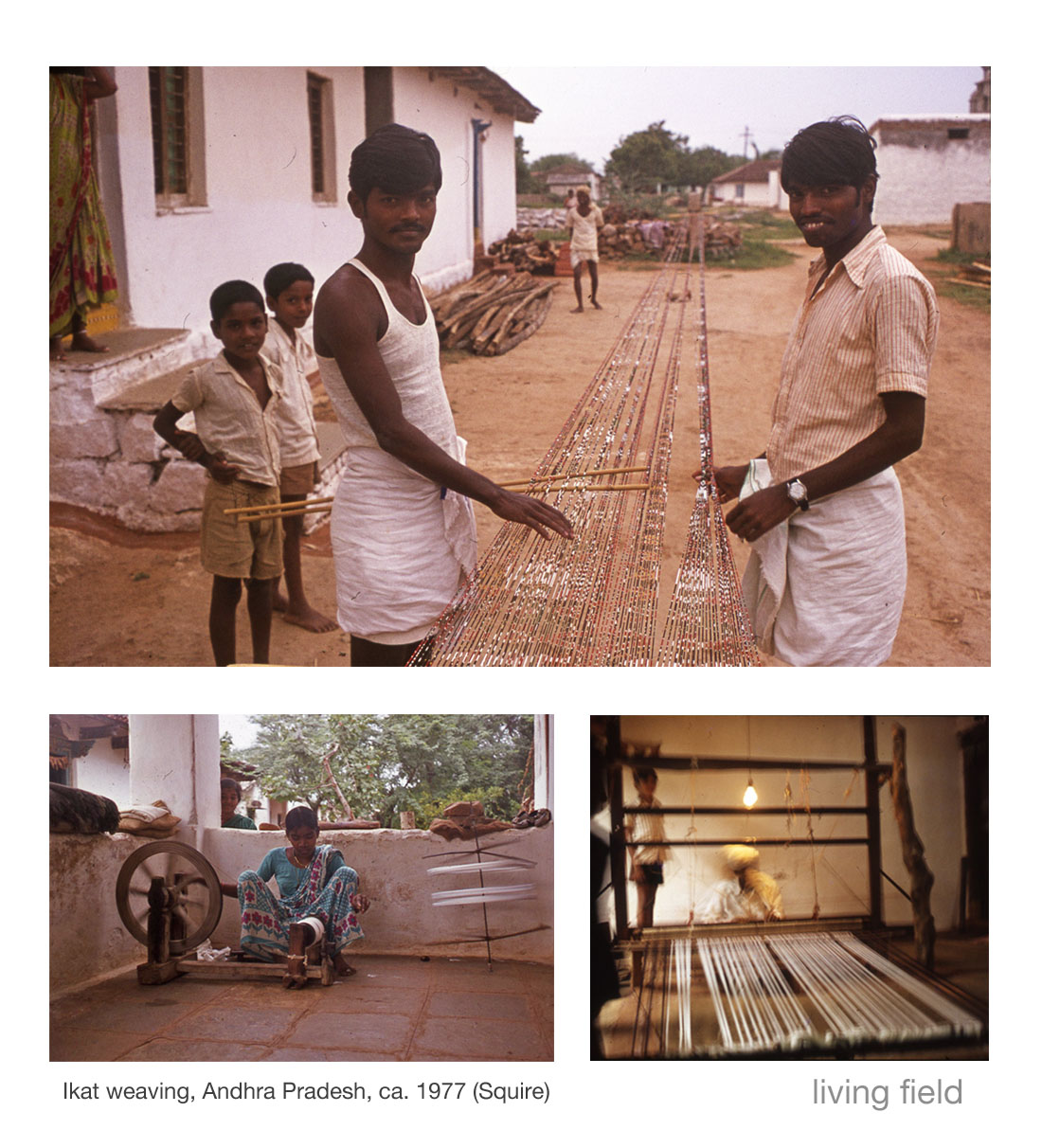Museums, web sites, places to visit, books, hints on growing plant fibres, where to get fibres, things to do with fibres
Introduction
Museums and online resources relevant to fibres concentrate on industrial manufacture and uses. Information on the growing of fibre crops and craft-scale manufacture is much harder to find. Visitors to the region are unlikely to see fibre crops, but will meet the fibre plant, stinging nettle, growing wild in many places. Best not to touch!
How to begin? View the wildfibres and woven communities web sites at the links below, visit a museum or exhibition on textiles or weaving, and to see what people wore a long time ago, dip into the books or web sites on the Tarim mummies and the ‘man in the ice’.
For a project – collect fibres and things made from them and find out what the source materials look like and where they grow. You could easily find 20 different plant fibres in shops and through web sales and quite a few more in the wild.
To continue with a more detailed study of fibres and textiles, try growing flax from seed. Several web sites show how to harvest last year’s nettle stems and extract the fibres. Wildfibres sells a wide range of plant and animal fibres. Woven communities list plants that were and are used in basket making.
For a more academic study, Thirsk gives the historical development of industries in the UK based on fibres such as flax, hemp and silk (yes, growing silkworms in Britain). Dixon and Dixon discuss the occurrence of flax and hemp at archaeological sites in Scotland. Farming and the Land edited by Fenton and Veitch has reference to flax in several of its chapters. The artlcle by DJ Currie has an extensive list of references and places to visit.
Web sites for plant fibres and products
Wildfibres at www.wildfibres.co.uk is a great source of practical info and products used in craft manufacturing, sells fibres and equipment and gives an extensive reference list on fibres. They provided the wool dyes with various natural dyes used by the Living Field. See also their www.wildpaper.co.uk.
Museums and other places to visit (plant fibre products)
Verdant Works, Dundee www.verdantworks.com, an excellent museum with ‘interactive exhibits, dramatic working machinery, film shows, gift shop and cafe’. The museum shows the huge impact of the industry built around imported jute fibre on Dundee and its surrounds. A must see for anyone with an interest in plant fibres and textiles.
Stanley Mills at Stanley, a few miles north of Perth, describes industrial production from the late 1700s onwards based on another imported plant fibre, cotton. The Mills has a visitor centre, exhibitions and demonstrations based on “a unique complex of water-powered cotton mills situated on a majestic bend of the River Tay”. Open April to October. Check the Historic Scotland Stanley Mills web page.
New Lanark World Heritage Site is a restored cotton mill complex 25 miles south east of Glasgow and 35 miles south west of Edinburgh. The mill worked from 1786 to 1968. It has since been restored as a centre of architectural, industrial and social heritage. Open all year – check for times at the New Lanark web site www.newlanark.org.
Scottish Crannog Centre Loch Tay www.crannog.co.uk has standing and special exhibitions that include craft work with plant products such as fibres. A ‘nettle day’ held there in 2011 showed extraction, dying, spinning and both woven and felt products.
Heart of Hawick, including Borders Textile Towerhouse www.heartofhawick.co.uk.
Angus Weavers Ltd, previously at the House of Dun, Montrose, are Scotland’s last hand loom linen weavers, and have quality cloths, in damask and double damask for sale, made from flax imported from the Baltic region (web site and location not known, February 2015).
Folk museums, such as the Highland Folk Museum in Newtonmore and Angus Folk Museum in Glamis include exhibits on textiles.
Web links for fibres in industry and heritage
Am Baile – Highland History and Culture is a web resource with a section on Highland crafts that gives gives notes and photographs of people using natural products in, for example, basket weaving, rope making with grass and heather, spinning, carding and thatching.
 Dundee Heritage Trust supports an Online Collections Database for textiles: the web site shows images of textile works, raw products, finished cloth, machinery, etc.
Dundee Heritage Trust supports an Online Collections Database for textiles: the web site shows images of textile works, raw products, finished cloth, machinery, etc.
Scottish Textile Heritage Online is a web resource dedicated to plant- and animal- based textiles (Ed – seems inaccessible, February 2015). The Scottish Textiles Heritage Online has a page on the University of Dundee Archive which contains records of the jute and flax industries.
ERIH European Route of Industrial Heritage has a section on textiles which includes the verdant Works Dundee and several other museums and heritage centres in the UK.
The Scottish Textile and Leather Association has a ‘textile trail’ and map of places to visit.
IENICA Interactive European Network for Industrial Crops and their Applications was a project funded by the European Commission.
Craft
Highly skilled craft-scale work using wool from local sheep has expanded in recent years toward specialist markets, local and international. In the Hebrides and Norther Isles:
- Uist wool should soon be opening a new wool centre – the link is to their Facebook page.
- Hebridean woolshed gives info on the sheep, wool, processing and natural dyeing.
- Skye Weavers shows some of the processing, including the pedal-powered loom; also some very nice images of hand weaving. Ardalanish farm.
- A Yarn from North Ronaldsay is a company in Orkney making and selling wool and wool products from North Ronaldsay sheep. Their web site has photographs showing the process of converting ‘raw’ fleece to wool.
- Ardalanish Farm and Isle of Mull Weavers keep cattle and sheep and sell a wide range of quality woven products.
- [more to follow]
Woven Communities is a first-rate website based around Basketmaking Communities in Scotland. Old images of basketmaking in progress and a page on materials showing the varied plant products used to make baskets. And it’s far from historical – there are many examples of the craft alive today.
Throughout the world, there are examples of thriving small industries based on hand-weaving and related skills. Ikat weaving with silk and cotton is one such, based in Andhra Pradesh India (images at bottom of this page).
Manufacture using fibre products
There are thriving – and not so thriving – textile industries based on natural fibres, mainly sheep’s wool. Barrie Knitwear in the Borders concentrates on cashmere; see also this BBC web page.
Several web sites offer yarn, rope and textiles made from natural fibres. Just search for the name of the fibre or product. For uses of jute, for example, Nutscene for twine, the Natural Bag Company and Geojute for biodegradable geotextiles.
More on this web site
Links to pages and posts on the Living Field web site
- Fiberoptic 1, 2, 3, 4
- Fibres in Design – Dundee Design Festival 2016
- Firth of Tay – silk weave by Cally Booker
Books and articles used as reference
Agriculture in Scotland. The report of the department of agriculture for the ten years 1939-1948. HMSO, Edinburgh, 1949.
Barber EW. 1999. The mummies of Urumchi. Norton and Company, New York.
Burkhill IH. 1935. A dictionary of the economic products of the Malay Peninsular. Reprinted 1966, published on behalf of the Governments of Malaysia and Singapore by the Ministry of Agriculture and Cooperatives, Kuala Lumpur, Malaysia. Two volumes, 2444 pages. (A resource of information on many tropical crops, not just those in Malaysia, but not for the casual browser.)
Crowfoot E, Pritchard F, Staniland K. 1992. Textiles and clothing 1150-1450. Museum of London (new edition 2001). ISBN 0 85115 840 4.
Currie DJ. Weaving in Scotland. Scottish Textile Heritage Online, but not accessible February 2015. (Gives extensive list of references and places to visit.)
Darwin T. 2008. The Scots herbal. Published by Berlinn, Edinburgh. (First edition, 1996). (Useful also for a section of dyeing of natural fibres.)
Dickson C, Dickson J. 2000. Plants and people in ancient Scotland. Tempus Publishing, Stroud, Gloucestershire. 320 pages. ISBN 0 7524 1905 6.
Fenton A, Veitch K (eds) Farming and the Land. Volume 2 in Scottish Life and Society: A compendium of Scottish Ethnology. Publisher: John Donald, 1172 pages.
Jackson G, with Kinnear K. 1991. The trade and shipping of Dundee 1780-1850. Abertay Historical Society Publication No 31. (Accessible online.)
Lawson P and Son. 1852. Synopsis of the vegetable products of Scotland. Edinburgh: Peter Lawson and Son. (Prepared for the Great Industrial Exhibition of all Nations – this privately printed book is an invaluable document of the plant species and varieties grown or tested in Scotland for agricultural use in the middle of the 1800s.)
Mallory JP, Mair VH. 2000. The Tarim Mummies. Paperback edition 2008. Thames and Hudson, London. 352 pages. ISBN 978-0-500-28372-1.
Spindler K. 1994. The man in the ice. Translated from the German by Ewald Osers. Weidenfeld and Nicolson: London (German edition 1993).
Thirsk J. 1997. Alternative agriculture. A history from the Black Death to the present day. Oxford University Press. 365 pages. ISBN 0-19-820662-3
Turner WHK. 1954. The textile industry of Arbroath since the early 19th century. Abertay Historical Society Publication No 2. (Accessible online.)
Wight, A. 1778-1784. Present State of Husbandry in Scotland. Exracted from Reports made to the Commissioners of the Annexed Estates, and published by their authority. Edinburgh: William Creesh. Vol I, Vol II, Vol III Part I, Vol III Part II, Vol IV part II, Volume IV Part II. All available online via Google Books.
Contacts
Contact/author at the James Hutton Institute for this page: geoff.squire@hutton.ac.uk
[Last update 17 September 2017: with new links, etc. ]




